HealthPlus

BE THE ONE YOU NEED
Author Sophia A. Nelson’s latest book urges women to put themselves first









Author Sophia A. Nelson’s latest book urges women to put themselves first







Mental health awareness appears to be overcoming the stigma that historically came along with being labeled mentally ill or unstable. Thanks to mental health organizations and awareness campaigns like the National Alliance on Mental Illness, Therapy for Brown Girls, The Trevor Project, Therapy for Black Men and the Association of Black Psychologists, mental health and fitness has become a normal part of everyday conversation. People, corporations, places of worship and social institutions are recognizing the need for mental health awareness and support and are shifting culture to better support those with mental health illnesses. For example, at the height of the COVID-19 pandemic, many insurance companies waived their member-fees for mental health services, covering 100% of the cost, to help those battling anxiety and depression in the wake of this public health crisis.
Even Black churches, which many believed to be the place to seek counsel for mental health issues, began admitting their limitations and encouraging members to seek professional help. Celebrities like Kanye West, Azealia Banks, Wayne Brady, Demi Lovato, Michael Phelps, Michelle Williams, Kid Cudi, Taraji P. Henson, Dwayne “The Rock” Johnson and Britney Spears have spoken publicly about their mental health illnesses and challenges. Just recently, international superstar Shawn Mendes announced he was canceling his world tour to focus on his mental health. Since then, the Grammy award-winning singer has been focusing on therapy and self-care.
Self-care is another term that seems to be making its rounds in the media and society. Self-care is the practice of taking action to improve one’s mental or physical health. When co-editing my book “Black Women’s Mental Health: Balancing Strength and Vulnerability”, self-care was a relatively new term. Now practicing self-care has become a movement with scores of articles, livestreams, podcasts, groups, and events are espousing the virtues of putting mental health and fitness first, especially as we continue to live in the era of COVID-19, and face new public health crises like monkeypox and the recurrence of old threats

like polio. Mental health fitness and self-care are keys to surviving and thriving during this precarious time.
Thus, this month’s issue is dedicated to exploring the ways in which self-care and restorative practices can improve overall health. We will hear from author Sophia Nelson, who had to take control of her mental health and practice self-care to find her way out of a dark place. The high-profile commentator wrote a book about her journey to self-care. Journalist/ videographer Max-El Saffold looks at the role walking groups play in improving the mental and physical fitness of women and how Black barbers are coming together to help improve the mental health of their clients. Psychologist and television pundit Kanika Bell, Ph.D gives readers advice on establishing boundaries and how that practice is a form of self-care. Ethnomusicologist and journalist Christopher A. Daniel talks to mental health activist and therapist Bobbi Jones, who offers tips on how Black women can improve their mental health. While many know me as a writer and journalist, I am also a media scholar, so I wrote about the need for media fasts in order to preserve one’s mental health. Being constantly inundated with negative imagery and information can chip away at one’s self-image and mental health, so periodically taking a break from social media, the internet and television can be restorative. In addition to these articles, we have lots of information on how to improve overall health. Writer Cindy Barnes-Thomas gives us tips on practicing health and safety at the cookout as summertime, fun time winds down. Journalist Kimberly A. Davis examines pelvic floor health and entertainment journalist Ronda Rocha Penrice discusses how fibroid health is being discussed in pop culture.
I hope you enjoy this month’s issue. Remember to take care of your whole being, to ask for help when you are struggling with mental health issues and there is absolutely nothing wrong with putting your mental and physical health needs first by practicing self-care.
In Health and Happiness, Nsenga Burton, Ph.D.
Nsenga Burton, Editor-in-chief
Nsenga K. Burton, Ph.D., is founder & editor-in-chief of The Burton Wire, an award-winning news site covering the African Diaspora. A writer, scholar and thought leader, Dr. Burton has served as editorat-large for The Root, editor-in-chief of Rushmore Drive (IAC), cultural critic for Huffington Post and Creative Loafing, and culture and entertainment editor for Black Press USA Newswire.
Janis Ware
James Washington
Nsenga Burton
Michael Grant
Donecia Pea Copy Editor
Clayton Gutzmore
Contributing Writer
Kimberly Davis
Contributing Writer
Cindy Barnes Thomas
Contributing Writer
Anoa Monsho Marshall
Contributing Writer
Christopher Daniel
Contributing Writer
Josina Guess
Contributing Writer
Jasmin
Ronda Rocha Penrice
Contributing Writer
Kanika Bell
Stephanie Evans
Contributing Writer
Mex-El
https://healthplusmagazine.org/the-healthplus-newsletter/

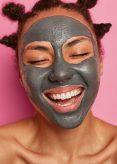

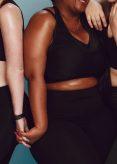







The pandemic posed a host of risks to my family. I was working in a hospital environment and coming in contact with hundreds of people daily, which forced me to step down in summer 2020. I didn’t feel safe or properly protected.
That career pivot posed every challenge that you could imagine. I made a career shift in my 40s after being married multiple times and having four children. Although I may be a seasoned entrepreneur, working in mental health is a completely different field.
I also recognize as a Black woman that when another Black woman calls for therapy, they’re typically calling from a place of desperation and have tried to talk themselves out of what they’ve already undergone before picking up the phone. Culturally, African Americans are told to pray it away, and it’s observed as a sign of weakness to solicit help from anyone, let alone a licensed professional.
I treat a great deal of single mothers and divorced women who are co-parenting or dealing with the pandemic as a constant state of trauma when they send their children out into the world and wonder whether or not they’re coming back.
I encourage those same Black women to incorporate self-care into their treatment plans by coming up with activities that bring them personal joy. I swear it’s like a deer in headlights when I ask because they don’t know.
I don’t come to the table acting as if I have all of the answers, but I’m highly trained to coax those solutions from the client t. It’s a very complex time to be in mental health.
People enter therapy because of life transitions or for additional support. You have a nonjudgmental, confidential person with a clinical education that does not see you in the same lens as your friends and family. It allows you a safe space to heal from whatever might be on you. To get over the stigma, here are some suggestions that I usually give Black women clients to get through 2022 which has been difficult:
Take breaks: Watch what you consume because the news can be daunting. If what’s happening on broadcast news is too much, don’t watch broadcast
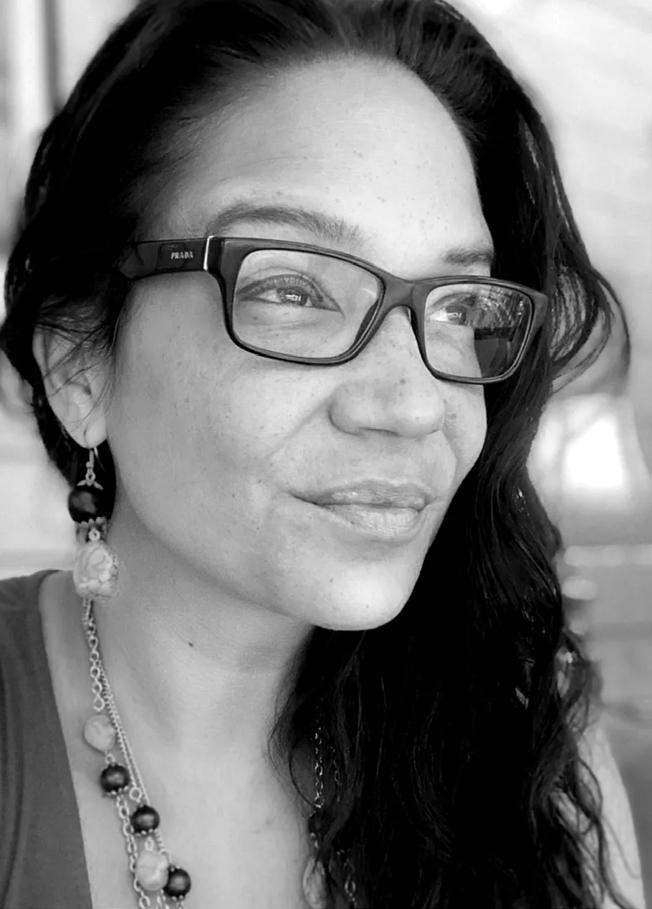
news. Read your news to stay abreast of what’s going on. If it becomes too much, you can set it down and come back to it later.
Those breaks are also not specific to the media. Take inventory of all of the things that are on your plate. Saying “no” is a complete sentence and doesn’t require an explanation. Buffer yourself and apply some bubble wrap between you and life. Don’t over command or take on more than you can chew. Check out sometimes from every role you have to play so that you can recoup.
Eat right, and get adequate rest because it does affect your mood: We must watch what we eat or put into our bodies. Make sure that you’re well-hydrated. If you’re having sleep disturbances, that’s one of the main signs that something else is going on.
If you’re getting less than six hours a night, it’s probably a good idea to consult with somebody like your primary care provider to explore how you can gain more sleep. Otherwise, you’ll be less resilient or apt to handle whatever stresses the day throws at you. If you have triggers, your triggers have more power over you on a day where you’ve not slept well the night before.
Identify triggers so that you can come up with effective coping skills for each: Triggers are any type of stimuli – positive or negative – but are usually considered negative, that causes an emotional response in you. It starts with thoughts that create feelings and
eventually manifest themselves into behaviors.
If you know what upsets you, throws you for a loop, or causes a change in mood, then you can try as best as possible to prepare yourself for it. If triggers cause a disservice to how you’re feeling, they warrant attention. Figure out why they exist, and then a seasoned therapist can help you take back the power.
We all see things through the lens of our experiences, how we were raised, our value system, etc. It’s about reconciling those feelings around what may have happened. Those experiences are still valid but healing from them and committing to being flexible enough to new endeavors without assuming they’ll turn out bad in the end, can help..
Plan self-care activities: Self-care is a term that gets overused consistently. People have come to a point where they emphasize getting massages or getting their nails done. That’s maintenance.
If you’re a professional woman, those are things you have to do to meet the standards that are expected of you. Self-care is about doing things for you. It’s digging deep to figure out what brings you joy. I encourage my clients, especially the women, to try to get to a space where they’re putting away at least 30 minutes to an hour a day into some type of selfcare activity.
It’s very individualized and looks drastically different from person-to-person; it could be reading, a long bubble bath, or lying still in the dark for 15 minutes. Black women are raised to be nurturers, selfless or rise to the occasion, so they’re the population that typically neglects self-care. They don’t usually take pause to discover the things they like, but they know all of the things that bring everyone else joy in their lives.
I am a Black woman and did it for years, and that is not a joy-filled life. When we’re not taking care of ourselves, we’re more easily triggered, we become hypersensitive, we build resentments around those we have to cater to because we’re depleted. We have to be accountable to understand that nobody is going to come along and tell us to take better care of ourselves. It’s important that we take time to explore what brings you joy, and that’s a process in itself.
Be present: Mindfulness is learning to be here and focused right now. Anxiety is usually rooted in
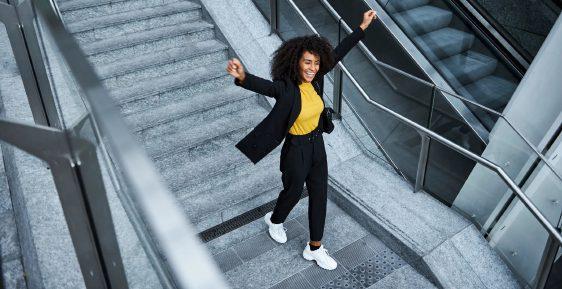
Are you having trouble finding motivation in your life?
There may be a change in your daily routine, or you could be going through a stressful time. There are many reasons you may be in a rut and unable to complete even the simplest tasks. Don’t get down on yourself! Here are a few tips on how to find that inner motivation and complete your to-do lists.
1. Time Management
The first step in attempting to dig up some motivation is to plan ahead. You may feel overwhelmed or stressed, and a task may seem so daunting you don’t even want to get it started. The best way to tackle your to-do list is to break it down into days. Begin by separating each item and then prioritizing them so you can start with the most timely
task. Then, you can break it down into how long each task should take so you can account for breaks, rest periods, and time with friends.
2. Organize
It is nearly impossible to successfully complete a task if your life is in disarray. This can be as simple as cleaning your bathroom, organizing your coat closet, organizing your files on your computer, or cleaning out the refrigerator. By completing a miscellaneous task that may or may not be a low priority on your todo list, you will feel accomplished and prepared to tackle your next task.
3. Take a Break
The most important part of a busy workday is taking a break. Plan ahead for a nice walk or run outside, watch your favorite TV show, grab
fear and usually shows up through overthinking. Whether it’s financial problems, a family issue or somebody dealing with illness, it’s all about what’s going to happen in the future.
If we dial that back a little bit (and it takes practice) to redirect our thoughts back to the present, it allows us to appreciate what is occurring around us right now. It’s taking on the elephant in the room in small steps.
your painting supplies and plan your next art piece, or do a regenerative yoga session. Whatever you choose to do, a break is essential for mental clarity and overall happiness. This mental break should prepare your mind (and body!) to tackle the next item on your list with ease.
4. Call a Friend
The act of calling a friend or family member may not be on your list, but it should be. A simple phone call can make someone’s day, and adding these special conversations into the daily routine can make a world of difference! Talking to a loved one may help you sort out your todo list and work through why you are stressed. They may even have ideas and advice on how to calm yourself down and motivate yourself to finish what you have started.
If we can focus on right now, then we’ll push through the moment to get to the next. Any large challenge requires baby steps to obtain that confidence to take it on. Focus on the present to alleviate some of the stresses.
As told to Christoper Daniel. Christopher A. Daniel is an award-winning journalist, cultural critic, historian, ethnomusicologist, and public intellectual. Born in
5. Reward
Last, but certainly not least, is the reward. This is what everyone looks forward to when completing a to-do list. Now, to make it even better, plan a fun happy hour with friends, a vacation, or a simple day trip to your favorite shopping mall or art museum. This will give you something to look forward to throughout the week, and it may even give you that extra push to power through a difficult day! Now that you have read about some helpful tips on finding your motivation in life, you should hopefully be able to tackle your to-do list with ease. Tomorrow is a new day. We all have off days, and we deserve rest days. And those restful days are all the more worth it with peace of mind that you have no task hanging over your head.
Spartanburg, SC, his work has been featured digitally on Shondaland, FRANK151/The ATLanta Backwoods, Urban Lux Magazine, TheBurtonWire.com, The Hip Hop Enquirer, TheRoot.com, HuffPost Live, soulhead. com, USA Today, Eater Atlanta, Shadow & Act, & Music Enthusiast Magazine. He has served as a U.S. correspondent for the British-based magazines Knowledge (KMag) and Blues & Soul.

Fibroids are a severe issue that women have been dealing with for decades. Fibroids are noncancerous growths that form in the uterus. This problem is not fatal; however, it can affect a woman's ability to have children. Each case of fibroids is different. Some women do not realize they have it until they visit their doctor after a menstrual period that is more painful than usual.
This medical matter is coming to the congressional level. Last year, the Stephanie Tubbs Jones Uterine Fibroid Research and Education Act was presented to the U.S. Congress by Senator Cory Booker. This act would create research and public education programs to support women suffering from uterine fibroids. As this topic gradually moves to the center of the conversation, more women with fibroids can rest assured they are not alone in this battle.
"The passage of that bill will check off all the boxes that will enable us to get to the point of better care for women. We can be at a point of really doing something about it versus just talking," said Paula Green-Smith, training manager for the Black Women's Health Imperative.
The Stephanie Tubbs Jones Uterine Fibroid Research and Education Act was brought to Congress by Senator Cory Booker in July 2021. It is named after the
As of this writing, the bill has been taken up at a legislative hearing at the subcommittee for health. The bill must be voted out of committee and placed on the House floor for a vote, and the Senate needs to vote it out of the floor to reach the president for it to be signed into law.
When the congressional bill is active, national health institutions will receive a grant of $150 million over five years for fibroid research. The research would spark the development of a new technology to tackle fibroids. The study would also explore why fibroids affect Black women more than other races. According to Johns Hopkins Medicine, Black women are more likely to develop fibroids than other women. Black women are diagnosed at younger ages and more often require treatment.
Fibroid research is severely underfunded. According to Green-Smith, when the bill becomes active, centers for Medicaid and Medicare would improve data collection to explore why Black women have an elevated risk for fibroids. The activation of the bill would lead to the CDC creating public education programs that would help women ask their doctors the right questions and equip medical professionals with the information they are lacking.
“You can have all the passion and commitment in the world, but you got to
A new bill in congress can be a breakthrough for women with fibroids

have the money to back that up for things to really move. The bill would fund the different agencies that can help us with the policy, can help us with the research, and can help with the advocacy.” Green Smith said.
In the meantime, BWHI continues to serve as a source for women with fibroids. This organization is dedicated to solving the most pressing health issues affecting Black women and girls in the United States. BWHI created Fibroids Unmuted, a campaign that gives Black women a safe space to discuss this topic and learn information that can make a difference in their approaches to fibroids.
"We wanted to give Black women a space to talk about fibroids without the shame or negative emotions this
subject brings. We had conversations with the intention to spark research and policies that will provide more compassionate care for Black women," GreenSmith said.
An unfavorable solution to the fibroids problem is surgery. Women can have their fibroids surgically removed, but that can affect their opportunity to have children. Unfortunately for Black women, most of them have their doctors recommend getting a hysterectomy, the removal of the uterus. BWHI is advocating for more treatment options for Black women with fibroids. Because the information on the alternatives is not shared enough, women do not know, and they end up going with the first option presented to them.
"The real point of this is to stop offering just a hysterectomy. This is the first option being offered to black women, and it's a problem. Especially when these women have said, `It is most important to me to be able to have children at some point in my life,’" Green-Smith said.
There are a few medications women can select to solve their fibroids issue. According to the Mayo Clinic, women can take Gonadotropin-releasing hormone or GnRH agonists and Progestin-releasing intrauterine device or IUD. These medications do work but they have peculiar side effects. GnRH blocks the production of estrogen and progesterone and puts users into a temporary menopause-like state. An IUD stops the heavy bleeding caused by fibroids, but it prevents pregnancy.
In an article on alternatives to hysterectomies, the Journal of the Society of Laproscopic & Robotic Surgeons, Dr. James E. Carter writes, “Laparoscopic myolysis can also be proposed as an alternative to abdominal hysterectomy in cases of large or multiple intramural fibroids in women over 40 who do not desire to bear children but who wish to avoid hysterectomy,” which can reduce the size of the uterine fibroid by 40%.
A woman’s struggle
Lenee Reedus-Carson is an example of not receiving adequate care for fibroids. She went through three different surgeries to solve this problem. Reedus-Carson is 52 and a senior program manager for BWHI. She was diagnosed with fibroids at age 28. She didn't realize it was fibroids until she went to the doctor after too many accidents on her cycle. Her doctor explained to her that she had fibroids.
From that visit, she discovered it runs in her family. She later spoke to her mother and aunts, and they shared that some of them got full and partial hysterectomies. Before her doctor's visit, Reedus-Carson believed it was just discomfort that she could push through.
"The entire time I was experiencing those uncomfortable menstrual cycles, I just thought it was normal. The pain just got so bad, and I noticed that I became so weak that there were times I couldn't get out of bed," Reedus-Carson said.
BWHI is trying to end more stories like Reedus-Caron's. Between their efforts on this subject and the movement of the Stephanie Tubbs Jones Uterine Fibroid Research and Education Act, there is hope for better care for Black women with fibroids.
Acclaimed journalist and author Sophia A. Nelson was in the battle of her life — literally — when she realized something important: She needed to start putting herself first. At a time when people around the world are struggling with physical, mental and emotional health crises because of the ongoing COVID-19 pandemic, her latest book, “Be the One You Need: 21 Life Lessons I Learned While Taking Care of Everyone but Me,” is essentially a guide to self-care.
Nelson, who left the GOP after making her career as a Republican, recalls that in February 2020, while she was traveling to a speaking engagement, she became “deathly ill” with what was later diagnosed as COVID-19. Isolated in her Indiana hotel room, Nelson says she began to think about her life, asking herself “Is this it? Is this how this is gonna wrap up?”, as well as the state of America and its toxic politics, and she wanted to “grab people” and get them to focus on themselves. It’s something particularly Black women historically have a difficult time dealing with in America.
“I wanted to speak to the part of us that we ignore, which is us, the self, the part
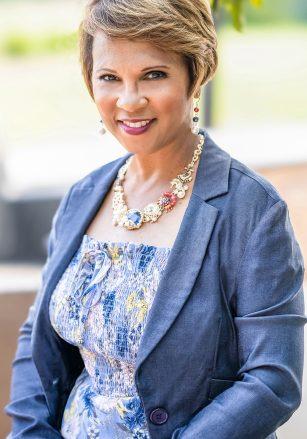
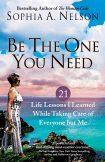
“I wanted to speak to the part of us that we ignore, which is us, the self, the part that we push down to take care of everybody else.”
that we push down to take care of everybody else,” Nelson, who uses deeply personal lessons and reflections in the style of memoir to give the book its sense of urgency, said. “I want to bring people back to their own humanity.”
That lack of humanity, Nelson argues, is partly due to our absence of joy and healing, as “we have just devolved into this angry, ugly, exhausted, immature, aggrieved culture” that cancels people instead of calling them in, and is “cannibalizing each other” as a result of rancor over politics around race, gender and sexuality.
Nelson, author of the 2011 book “Black Woman Redefined: Dispelling Myths and Discovering Fulfillment in the Age of Michelle Obama,” says her hope is that if we can discover our own humanity, needs, wants and desires, and really deal with them, we will then be better positioned to see other people and hear other people.
“For me this book is a calling; this book is me telling people that if you’re struggling right now, if you’re feeling this anxiety, this stress, this pressure that we’re all under, it’s because we’re not dealing with our own stuff, we’re not tending to our own needs, we’re not looking out for self,” she says. “It’s not going to work out if we don’t do something about this soon.”
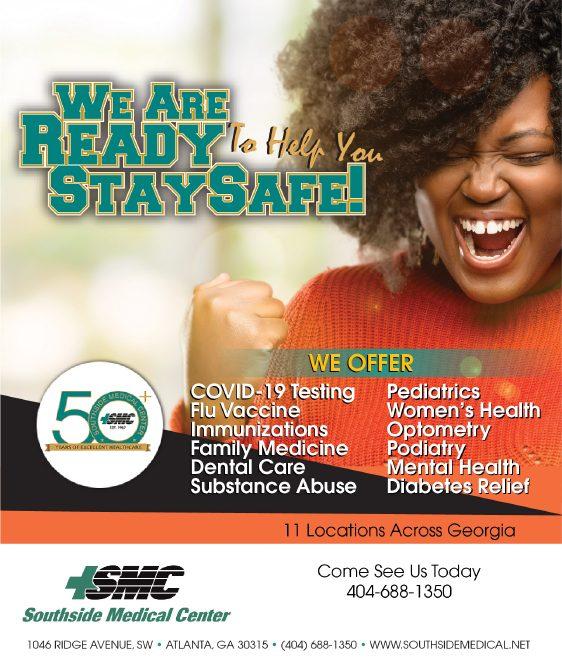
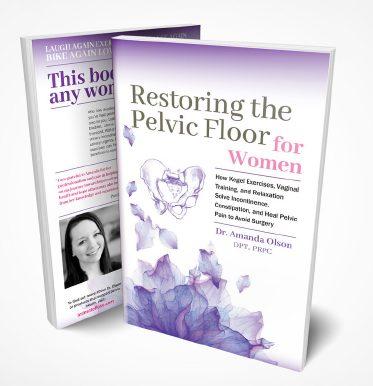
We’ve all been there: after hours of summer travel on a plane or in a car, you feel a twinge in your back or a soreness in your hips. Maybe the change in your schedule means you’re having a hard time staying regular. The culprit? Your pelvic floor, and there are many ways to alleviate these problems before they even start, says Amanda Olson, a pelvic health physical therapist who practices in Medford, Oregon.
According to the National Institutes of Health, the pelvic floor is “the group of muscles
that form a sling or hammock across the floor of the pelvis.” Along with the surrounding tissues, these muscles hold the pelvic organs in place so they work properly. The pelvic organs include the bladder, urethra, intestines and rectum. A biological female’s pelvic organs also include the uterus, cervix and vagina.
“They’re muscles just like everywhere else in your body, '' says Olson, who is president and chief clinical officer of Intimate Rose, a women’s health website. “They can be strong, they can be weak, they can be too tight, they can have scar tissue, they can be poorly coordinated.”
If you’ve been neglecting your pelvic health,
you may start to have problems with your pelvic floor when the area becomes injured or weakened, such as pain with sex, diminished bowel control and bladder problems, along with gastrointestinal issues. There’s also the possibility of pain in the areas that connect to the pelvic floor, such as the hip, abdomen and back.
For those who are still expecting to travel this summer, Olson, author of “Restoring The Pelvic Floor: How Kegel Exercises, Vaginal Training, And Relaxation Solve Incontinence, Constipation, And Heal Pelvic Pain To Avoid Surgery,” offers these tips to keep in mind for dealing with pelvic floor disorders. As with all exercise or advice, be sure to consult your physician:
Stay hydrated: Drinking enough water can help alleviate travel constipation because of changes in your eating schedule or diet. Don’t fear using public restrooms, either, Olson says, as hovering over the toilet can cause even more issues. Bring your own toilet seat covers or cleaning wipes if you have to, but just sit down and relax for a smooth bowel movement.
Take breaks from sitting whenever possible. Hop out of the car to stretch your hips, legs and back even if you don’t have to go to the restroom. Hold on to the car door and do deep squats if you’re able. On a long flight, swing or move your legs to get some blood flow and circulation to the muscles in the pelvic floor. Ask for assistance with your luggage if it’s too heavy, as weak core strength can injure your lower back. And remember to stretch when you disembark. Olson suggests yoga poses such as happy baby, hip stretch (ankle over knee), child’s pose, and deep squat. You may also want to use a massage wand to help release tension in your hips.
Try to avoid stress as much as possible, as stress can cause the muscles of the pelvic floor to clench or tense up, especially when you’re sitting.
If you begin to experience pain or discomfort or any other symptoms related to your pelvic floor, it’s important to see a pelvic health specialist, as these are fixable conditions that may be treated conservatively, according to Olson. “When it comes to the pelvic floor, it’s not a no-pain-no-gain kind of approach to managing it,” Olson says. “It’s more about learning how to coordinate and use the muscles effectively so they don’t get into that position to begin with.”
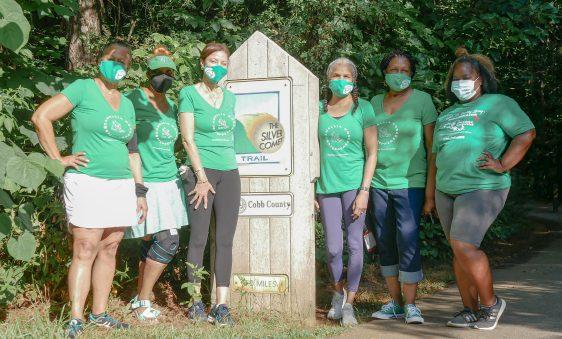
Friendship and fitness have two major things in common: Both are necessary for living your best life, and both require some work to be of the highest quality.
For decades, organized walking groups have proven effective in promoting both improved fitness and strengthened interpersonal bonds via regular meet-ups at local parks, trails and neighborhoods around the country; and not only have these gatherings been beneficial, they’ve also proven somewhat intoxicating.
“I think we all feel so much better after a walk,” says Marian Roach, lead organizer of the Camellia Rose Steppers, the 30-plus member walking group of the Atlanta-based Camellia Rose Chapter of The Links, Inc., a national organization of Black women dedicated to service and friendship.
Through their “Walk for Healthy Living: 75 Million Step Challenge” and their annual Walk-A-Thon, The Links encourages its members to step in the name of fellowship and service while reaping the bene-
fits of regular brisk walking – which include improved cardiovascular fitness, reduced stress, increased energy, a strengthened immune system and several other goodies, according to the Mayo Clinic.
The “75 Million Step Challenge” tasks members with taking 5000 steps daily, and the Steppers have had no problem meeting and exceeding that quota.
“As a chapter we have done over 52 million steps – which is more than a trip around the equator – so we’re very excited about that,” Marian boasts.
And in case you’re wondering: 52 million steps is about 27,152 miles, while one trip around the equator is 24,901 miles, so she ain’t lyin’.
They’ve practically walked around the world and have enjoyed taking every step – together.
“It has been a wonderful experience,” Marian says. “Not just to walk for our health, but also for the friendships that happen as we’re walking the trails.”
Good food, good conversation and fellowship are good for the soul. A fun card game and infectious music doesn’t hurt either, which brings us to our favorite outdoor staple, the cookout.
In spite of the heat wave, eating outside offers some COVID-19 protection and allows attendees more social distancing options.
When cooking out, some automatically think of hot dogs, burgers, ribs and brisket. Many reach that conclusion because 150 million hotdogs, 700 pounds of chicken and 190 pounds of red meat and pork are typically consumed on the Fourth of July.
That’s good eats, but healthier options are easily within reach. Whether you are cooking for a crowd or doing meal prep for the week, the grill is an asset and healthy dishes can be just as delicious.
Grilling has many health benefits. When grilling and cooking meats, the fat literally melts and runs off the grill so there is less danger of consuming unwanted fat which translates into unwanted calories, and who wants that outcome?
More minerals and vitamins are retained when grilling fruits and vegetables. Adding seasonings and fresh herbs also enhances flavors so that you don’t have to rely on butter or fattier oils.
Now, many people grill using gas instead of charcoal, which increases cancer risks. Gas is cleaner and emits less smoke which is healthier for the cook and the attendees.
One only has to peruse Instagram or Facebook Live to find amateur and professional chefs
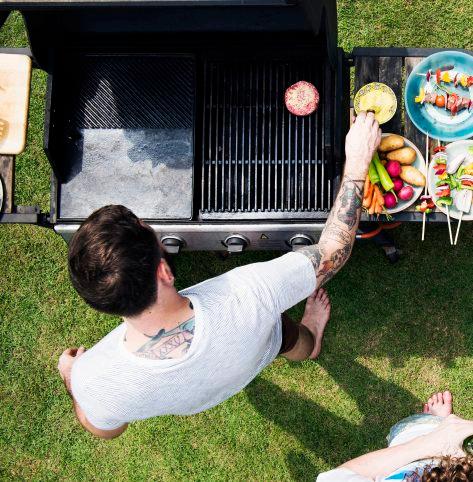
who offer a bevy of creative ways to use the grill for healthier meals during the July Fourth holiday. While many people have cut the cord, the Food Network, CLEO TV, and Cooking Channel dedicate weeks of programming to Juneteenth and Fourth of July celebratory meals.
Many of the segments feature healthy meals using the grill, which lets off the heat outside instead of inside your home. Another benefit of grilling is turning the oven off and putting healthy foods on the grill, which keeps the house cool in case you need
a respite from the hot temperatures outside and need to pop inside and cool off for a bit.
In addition to healthy items, there are some important tips for pulling off a solid cookout The most important task is to prep ahead of time and keep it simple. Clean and chop food in advance and assemble on foil pans or grill pans. Toss with a healthy oil and seasoning, cover with plastic wrap or foil and refrigerate until it’s time to grill.
Depending on the guest list, you may want to offer options to consider various dietary restric-
tions. Deconstructed kebabs are a good way to cook for a crowd and allow your guests to eat without reservation. You’re also not spending precious time customizing food for various palates but presenting food separately so folks can eat what they want and not waste food.
Kebabs are cute, colorful and touted as healthy, but not necessarily easy to eat. Also, cooking kabobs can get dicey when cooking proteins and veggies together. Burnt veggies and raw chicken are not a good look.
So, when grilling on skew-
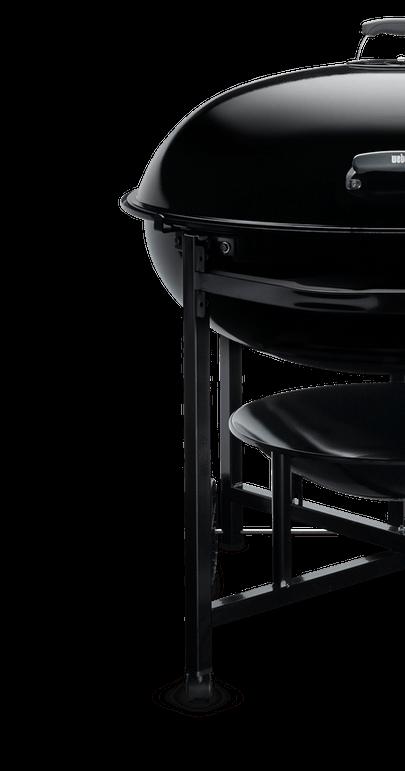
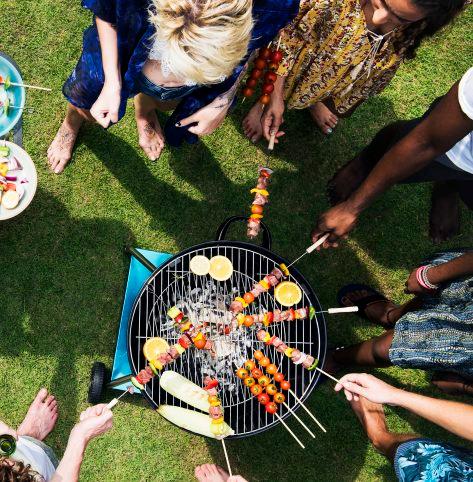
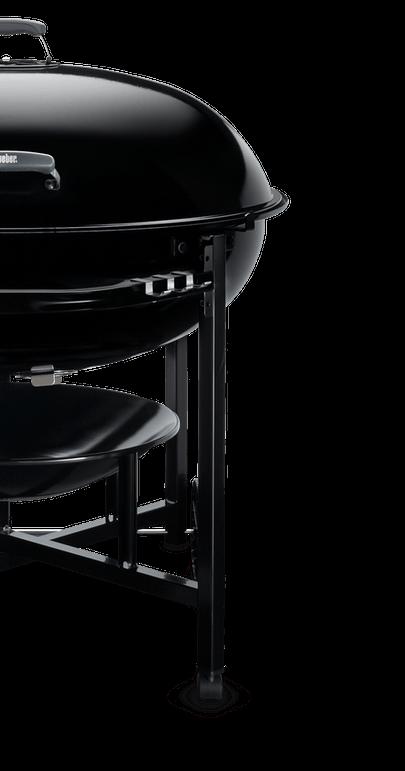
ers, make sure the items are the same size so that they cook evenly. Choose skewers that are easy to handle to ensure you continue to look as fabulous at the end of the “White Party” as you did at the beginning.
Healthy foods aren’t the only important health topic when grilling. Preventing cross-contamination of foods and maintaining healthy food temperatures are also essential to keeping it healthy. Wear gloves when grilling, wash your hands after handling meats, fruits and vegetables and keep the hand sanitizer nearby. Cook-
ing vegetables on a pan or foil packet avoids the debate about cross-contaminating veggies with animal products on the grill.
Tomatoes, zucchini, squash, corn, onions and peppers are plentiful and in season. Grilling these items brings another layer of flavor whether you’re pairing with proteins or making a salad.
It’s also an opportunity for your guests to customize their meal. Accompaniments such as tortillas, flat breads or salad greens give options for a DIY taco bar, pizza on demand or salad add another fun element to
for vegetables or make packets to enclose veggies or seafood. It reduces the mess and the likelihood of an allergic reaction to seafood for those who may have shellfish allergies. The use of foil makes it an easy cleanup after the party. Make it convenient for your guests to clean up after themselves. Access to paper towels, hand sanitizer, wet wipes, clearly marked trash and recycling containers is also helpful.
Finally, make sure to keep condiments and food cold, especially salads containing mayonnaise and condiments that contain egg. Do not leave them out for more than two hours because you could get salmonella poisoning or another food-borne illness. Put condiments, cheese, dressings, salad greens and desserts with dairy in a cooler to avoid spoilage and to keep items fresh. Colored cups for the kiddos and adults can help them remember whose cup is whose and stop the spread of summer colds, flus and, of course, COVID-19.
your gathering.
One of the ways to take flavor profiles over the top when grilling is to use marinades, which can also be healthy. Making your own marinade is simple. Oil (olive, canola, grapeseed or avocado), acid (vinegar or citrus), salt, pepper and herbs (dried or fresh) are easy to purchase if you don’t already have it on hand. You can get ready-made marinades too, but if you’re interested in controlling your ingredients and calories, then, make your own. Keep it clean and keep it classy. Use foil on your grill pans
Stay hydrated by drinking plenty of water, sparkling or flat, lemonade, tea and an assortment of juices. These items can also be used as bar accompaniments and for mocktails to keep it festive and safe. Make sure you have designated drivers on hand. What’s the point of having a fantastic cookout with healthy options if you can’t make it home safely?
If you follow these tips and remember to have healthy options available for guests, your cookout can be happy and healthy in more ways than one.
This article was written by Cindy Barnes-Thomas, a freelance writer based in the nation’s capital. Follow Cindy on Twitter @TheRealCinSai.
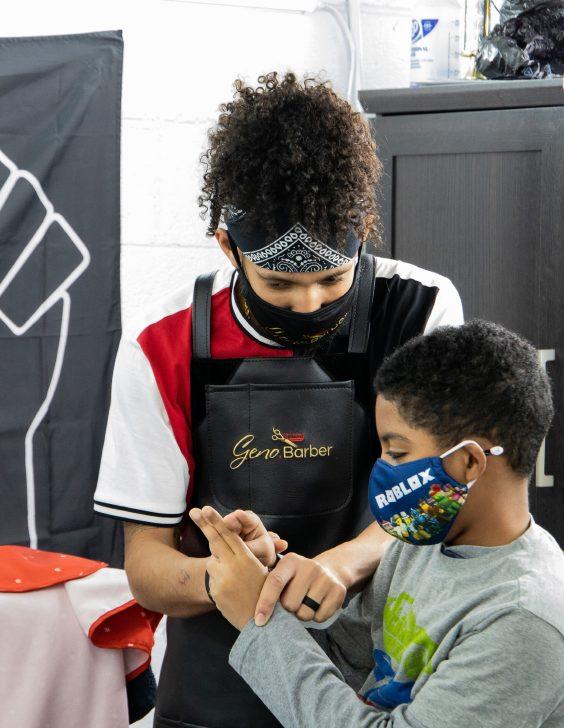
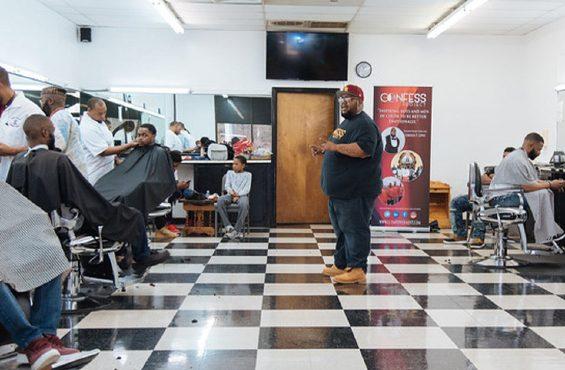
There are few places in America where Black men can be totally honest. Society often treats Black men like a threat, and too often our community teaches us that expressing anything other than strength is sucka behavior, so we keep our guards up. “Protect yourself at all times,” is often our mantra.
We’ve been wearing masks long before COVID made it mandatory.
There is one place where barefaced transparency from Black men has always been accepted and encouraged, though…
“The barbershop is one of the few places in America where we can be
ourselves,” former behavioral health professional Lorenzo Lewis says.
Recognizing both this fact and the dearth of Black psychologists – as of 2020, only 4% of the 41,000 U.S. psychologists were Black – and effective treatment options available for Black men, Lewis founded The Confess Project to address these issues head-on.
“There was a clear disconnect between the providers and Black patients,” he recalls of his time as a practitioner. “Hard to be connected to a system that don’t look like us.”
Launched in 2016, TCP looks to strengthen the culture of mental health among Black men and boys by arming barbers with knowledge-based resources to assist clients in need.
Their concept is novel but uncomplicated, schooling barbers via a training program based on the pillars of active listening, validation, stigma reduction and communication. These skills “can all work in real time during a haircut,” Lewis adds. TCP also provides additional resources and crisis support to ensure barbers have the tools to help clients in potentially dire situations.
In late 2020, Harvard University researchers conducted a study on the potential effectiveness of TCP’s approach to mental health advocacy, finding that “greater support of barbers as trained gatekeepers could indeed become a game-changer” because barbers “can engage communities at their grassroots levels … that in
some cases can mean the difference between life and death.”
So far, TCP has trained nearly 1,500 barbers across 16 states, and relocated its headquarters to Atlanta earlier this year. The geographical move is the latest step towards the ultimate goal of eliminating the stigma around mental health and creating more safe spaces for Black men and boys.
“Atlanta sets the trends for the country. We hope to use the momentum to scale and show others how to participate,” Lewis explains. “We’re working to develop (TCP) into a rigorous training program that can be replicated across America and, hopefully, globally one day.
“We want Black men everywhere to feel seen, heard and celebrated.”
 By Ronda Racha
By Ronda Racha
irst Wives Club” creator and “Girls Trip” co-writer Tracy Oliver didn’t know she and her team would put a spotlight on fibroids in her latest series Harlem on Amazon Prime Video. For a series starring Meagan Good as the center of a tight group of longtime girlfriends that also includes Empire’s Grace Byers, Jerrie Johnson, and Shoniqua Shandai as they all navigate life, love, and career in the storied New York City haven, fibroids is not the natural go-to. Instead, that change, Oliver told the African American Film Critics Association Virtual Roundtable, happened “organically.”
“One of the Black women writers in the room was dealing with (fibroids) and that kind of sparked a very honest, vulnerable discussion of all of the stuff that we (as Black women) had been silently dealing with,” Oliver explained. To bring awareness to the very real health challenge fibroids present, Oliver and her team incorporated it into the storyline for Tye. As founder/CEO of her own tech company, where her dating app is the main push, Tye definitely fits the “strong Black woman” archetype prone to suffer in silence.
Uterine fibroids, or leiomyomas, as they are medically known, are non-cancerous tumors or growths made of fibrous tissue like muscle that grow in and around a woman’s uterus. The U.S. National Institutes of Health (NIH) estimates that 20-25% of reproductive age women have fibroids. Black women are hit especially hard, with up to 80% experiencing some form of them by age 50. Prompted by the lack of awareness and urgency dedicated to the common chronic disease, then Senator Kamala Harris offered potential help by introducing the Uterine Fibroid Research and Education Act of 2020. In the bill, Harris proposed $30 million in annual funding to the National Institutes of Health to expand fibroid research. It also called for money for a public education campaign as well as to the Centers for Medicare and Medical Services to boost up information about fibroids in the chronic conditions database.
“Imagine having different people exploring your body telling you, ‘Oh, no, that doctor was wrong. We’re going to do this.’ But the doctor already took this out of my body.”
on their hit reality show Real Housewives of Atlanta. Burruss even cited her challenges with fibroids as the prompt for choosing surrogacy to expand her family.
Even though awareness of Black women and fibroids is building, it is rarely incorporated into scripted drama storylines. And, as a masculine-presenting queer woman, Tye helps to underscore how pervasive fibroids are among all Black women. Towards the end of Harlem’s first season, the driven tech founder finds herself in the hospital where her longtime friends surprisingly learn she has fibroids. Raising awareness of fibroids is a storyline that hit home for Jerrie Johnson who plays Tye.
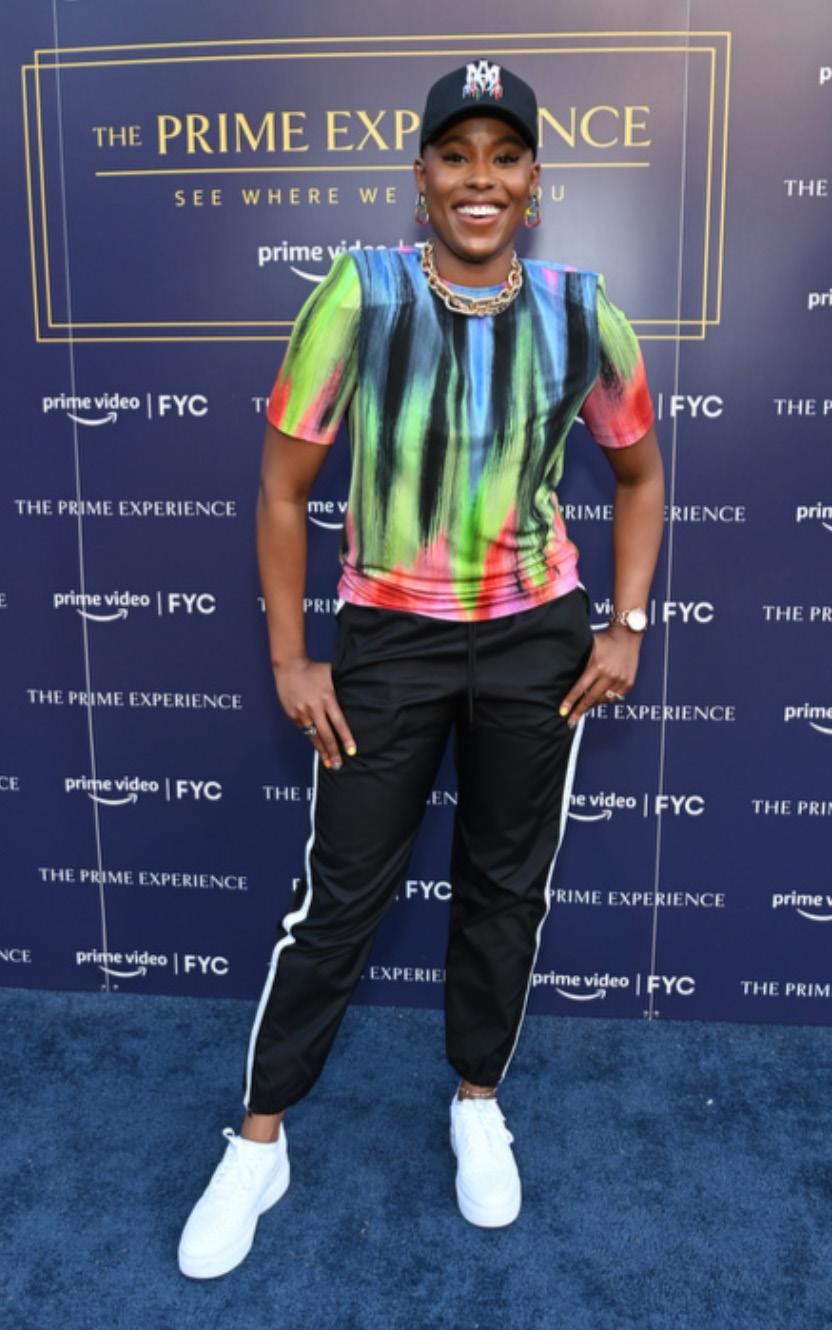
Heavy bleeding during periods and beyond is a common symptom. Many women also experience growths resembling a pregnancy. Infertility or difficulty conceiving are also often the result of
fibroids. On the December 7, 2021 episode of the Tamron Hall Show, rapper/actor Eve shared her journey with fibroids and her resulting infertility. That struggle, she revealed, was the main reason she was then stepping away from her new ABC series Queens. Cynthia Bailey and Kandi Burruss are also sufferers who have each shared their struggles
“I have an aunt who has fibroids who struggles to this day,” she shared. Plus, as someone who studied African American Studies, Johnson also can’t help but think about the role white supremacy has played in controlling Black women’s bodies, especially as erroneous information is continually dispensed and hysterectomies removing the reproductive system are routinely pushed.
“Imagine having different people exploring your body telling you, ‘Oh, no, that doctor was wrong. We're going to do this.’ But the doctor already took this out of my body. So now you're gonna do this? So, you’re continuing to get second opinions from the same kinds of people who don't care about the longevity of Black womanhood in America to begin with,” she beckoned, reminding all that gynecology as a practice in this country came as a result of frequently nonconsensual experimentation on Black women’s bodies.
“I wanted to highlight (fibroids) because it's an actual issue that affects Black women. And a lot of times, when Black women go to doctors to get diagnosed or get help for it, they're either misdiagnosed or sent away or dismissed in a way that other women are not,” Oliver explained.
As we have seen in other areas, representation, indeed, does matter. So, with Tye’s fibroids storyline on Harlem, Oliver is making a statement that Black women’s health is also important in ensuring that Black women are seen.
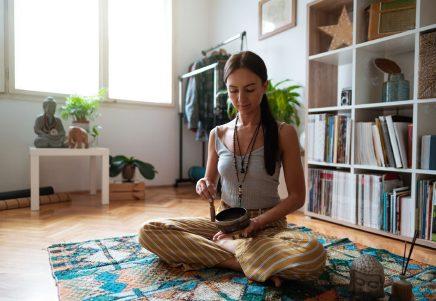
Feng Shui is an ancient Chinese practice that uses energy, balance, and natural elements to bring harmony to a space or environment. Many of these elements have become a popular basis for home decorating and organizing. We spend a lot of time in our homes and ask a lot of our spaces. We want them to welcome guests—and be a restful space where we sleep and relax and a place to inspire us when we need to be productive.
Below, we explain basic Feng Shui concepts and some easy ways to create a balanced, stress-free home that meets the goals for each space.
At the heart of Feng Shui is Qi, the energy that connects all things. In Feng Shui, the goal is to allow Qi to flow through your home. This is done by:
• Designing a free path from your front door into your home.
• Keeping your home free from clutter.
• Having a minimal amount of furniture.
• Letting natural air in whenever possible.
Another key component of Feng Shui is the five elements: earth, metal, water, wood, and fire. Incorporating
each of these elements in your home may bring a sense of balance and harmony.
Here is a brief description of what each element adds to your home and life along with examples of how to bring each element to your house:
• Earth is said to bring stability and help you and your home feel grounded. Decorate with items in earth tones (browns, greens, rusted red, grey, beige), photos of landscapes, pottery, or containers with sand, crystals, rocks or stone.
• Metal is associated with beauty, joy, and efficiency, as well as focus and clarity. You can incorporate metal with furniture, planters, sculpture, frames, and even throws and pillows with silver, brass, or bronze-colored materials.
• Water assists with intuition, abundance, movement, and cleansing. Bring in these elements with black and dark blue colors, calming photos or artwork of water, aquariums or fish bowls, mirrors, objects with wavy textures, or water features like fountains.
• Wood represents flexibility, growth, new life, and health. This is best incorporated with live plants, bamboo, and wood furniture, as well as green, blue, and teal colors.
• Fire ignites our inspiration, passions, emotions, and action. The color red brings in this element, as do fireplaces, candles, and lighting. Red, in particular, should be used sparing-
ly and not in rooms where you want to create a sense of calm.
Just like we want to fill our home with items and colors that bring a sense of peace and calm, we want to remove items that provide negative energy.
• Clutter can decrease productivity and increase stress, distracting our attention and making it difficult to find things. Declutter the Feng Shui way with these tips from the author of Clear Your Clutter with Feng Shui.
• Emotionally charged objects in your home cause negative energy that can lead to stress or overwhelm. This includes clutter or that gift someone gave you that you don’t like but feel bad throwing or giving away. Unfinished projects, reminders of the past, and other people’s belongings can also be emotionally charged.
• Placing your bed on the same wall as the door can lead to feelings of being unsafe and blocking the flow of chi in the room. Instead, your bed should be in the commanding position as described in How To Position Your Bed For Better Sleep, According to Feng Shui.
• Mirrors in the wrong places can have negative symbolism and wreak havoc on the energy in your home. According to Designer Katrina Lee, the 5 Places Not to Hang a Mirror include across from the front door where the chi will be sent right back out and in the bedroom, which can invite a third party into your room!
Are you ready to create peace and balance throughout your home with these Feng Shui ideas? Minor adjustments using these ideas and perspectives can make a huge difference in how you feel about and in your home.
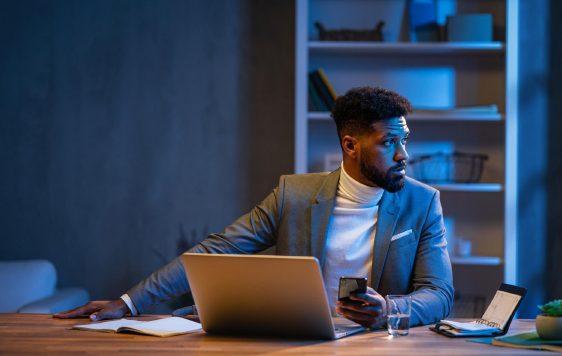
Anti-Black racism appears to be at an all-time high. Many are still traumatized by the targeted mass shooting of African American shoppers at Tops grocery store in Buffalo, NY that left 10 people dead and three injured. Eleven of the 13 victims were African American. The alleged suspect Payton Gendron, an 18-year-old self-described white supremacist, was taken into custody without incident, after driving 3.5 hours to “take out all Blacks.’ The man obsessed with “great replacement theory,” which has been debunked and cited as a conspiracy theory based on paranoia, fear and not fact, planned for five months how to kill Blacks, sharing this information online. He live streamed the killings on Twitch, which authorities have called a hate crime. Gendron pled not guilty at his arraignment.
Gendron’s violent act brought back memories of other anti-Black mass shootings like the 2015 white supremacist murders of nine church members at Emanuel African Episcopal Church affectionately referred to as Mother Emanuel in Charleston, South Carolina. Coupled with the continued police shootings of unarmed Black people, many of whom are in the midst of a mental health crisis, violent attacks on African Americans by non-Blacks captured and circulated on mobile phones, and the televised failure of the justice system to convict or punish those who commit crimes against African Americans like the police or everyday citizens, the mental stress of being African American and living in the United States is palpable. The verbal and physical harassment of Black Americans by white women is so prevalent that the name, “Karen” has been used to describe the senseless encounters in which the women often violently attack the Black victim or weaponize the police against them. These videos are widely circulated on social media as well.
Thus, it is often necessary to take a “break” from the media and to engage in what media scholars call a “Media Fast.” A media fast is when you thoughtfully and intention-

ally disengage from forms of media for a fixed amount of time in order to give your psyche a break from the onslaught of often violent, stressful images, and stories found on traditional and digital media platforms.
According to media scholar Racquel Gates, media fasts serve a purpose because of the volume of images African Americans are exposed to in a given day. “It’s not just the violent anti-Black content of the media; it’s the omnipresence of it on every platform, coupled with a society where every interaction is increasingly happening in mediated spaces,” the Associate Professor of Film and Media Studies at Columbia
University says. “You watch the news and have to hear about police brutality. You go online to look at social media and an associate shares a disturbing video. You pull up a funny clip from YouTube but the ads traffic in subtle or not-so-subtle problematic messages. Sometimes, the only way to avoid the constant onslaught is just to remove yourself altogether,” the author of “Double Negative: The Black Image and Popular Culture” said. Media fasts give African Americans a break from the stress of being Black in America and the constant mediation of Black trauma.
According to a 2021 study entitled, “Highly Public Anti-Black
CONTINUE TO PAGE 22
CONTINUED
FROM PAGE 21
Violence is Associated with Poor Mental Health Days for Black Americans,” (David S. Curtis, Tessa Washburn, Hedwig Lee, and David H. Chae) found that Blacks reported poorer mental health in weeks when two incidents of anti-Black violence occurred when national interest was higher. This study identified 49 incidents of racial violence in the U.S. occurring between 2013 and 2017 and received widely varying levels of search interest (Google Trends and Behavioral Risk Factor Surveillance System [BRFSS). The reality is that exposure to anti-Black violence has real consequences for Black mental health, so it is imperative that African Americans consider taking a break from traditional and online media.
What can African Americans do during a media fast? African Americans can take walks, do yoga, meditate, read books on uplifting or inspirational topics, play board games, knit, and listen to music that makes you feel good. Form a group of non-toxic individuals and have coffee or tea and conversation about fun topics. Don’t feel compelled to give up everything all at once and for long periods of time, which can also cause stress. Start out slow and choose one media platform to give up for a few days and see how you feel. Then, continue or add another or do what feels best for you.
Once you break your fast, don’t jump back in and pick up the same social media habits. Maybe you learned to live without a social media platform that caused you great stress during your fast? Say goodbye to that platform permanently. Instead of watching news shows that are opinion heavy, focus on traditional news programs that of-
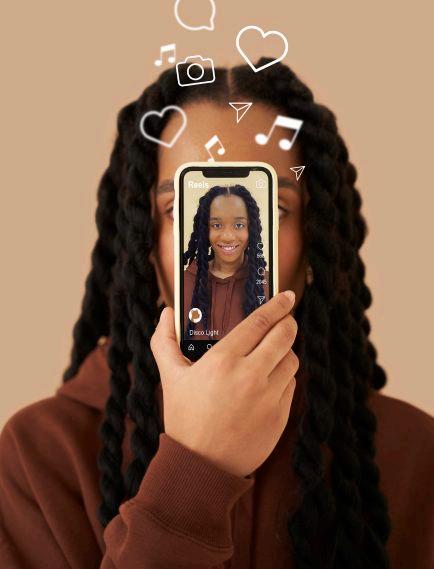
fer information with no editorializing. If watching the news causes you to lose sleep at night, then try reading it from a legitimate news organization.
If you read online news, frequent sites that offer “trigger warnings” to help you decide whether or not to watch that video or listen to that podcast.
Whatever you do, make sure you
take an occasional time-out from media in order to support your mental health.
This article was written by Nsenga K. Burton, Ph.D., editor-in-chief of HealthPlus Magazine. Dr. Burton is a film and media scholar and co-directs the Film and Media Management Con-
centration at Emory University. Nsenga is also founder & editor-in-chief of The Burton Wire, an award-winning online news site covering news of the African Diaspora. Follow Nsenga on Twitter @ Ntellectual or @TheBurtonWire.
A few years ago, my good friend was sick, and we didn’t know what was wrong with her. She couldn’t sleep and her appetite was disturbed. Her hair was falling out and no matter how much she exercised, she couldn’t lose weight. Most notably, my friend was cranky. And I mean cranky. This was not her. She got loud with others, snapped at people for asking questions, rolled her eyes continuously, and said hurtful things. My friend was sick, and we just didn’t know what it was.
Many suffer for a long time, trying to determine the source of their fatigue, irritability, skin problems and digestion difficulties, often with no conclusive results, only to find out much later that they have been suffering from autoimmune disease. Many aren’t aware that autoimmune diseases have physical effects which can lead to mental health issues. Autoimmune disease: The silent culprit
The most well-known autoimmune diseases are lupus, rheumatoid arthritis, and Type I diabetes. But the aggravating symptoms associated with psoriasis, Graves’ disease, celiac disease and diseases related to hypothyroidism often go unchecked. Considering the overall prevalence of autoimmune diseases, we seem to know little about what causes them, how to accurately diagnose them and how to alleviate the symptoms. The Cleveland Clinic estimates 1 in 15 Americans have an autoimmune disease and there is still so much ambiguity. What we do know is autoimmune diseases such as hypothyroidism, Type I diabetes, ulcerative colitis and lupus directly affect the brain, (Keyser & Dalmau, 2011) but we don’t often extend grace to those affected when their mood and behaviors take a turn for the worse.
According to the Lupus Research Alliance, between 80% and 90% of people with lupus develop what is called neuropsychiatric lupus, which can result in mental fog and depression, and 25% of these individuals will develop severe depressive and anxiety symptoms. These symptoms coupled with exhaustion and chronic pain can make being effective at work, socializing with friends and even rearing children substantially difficult. Irritability and mood swings can lead to social isolation, worsening the impact of the disorder to beyond physical symptoms, resulting in notable emotional and social consequences. Recent research, e.g., Jeppesen and Benros (2019), suggests that even psychosis, a severe symptom presentation that might include hallucinations, delusions and significantly disorganized thinking, may be related to autoimmune disease.

So why aren’t we spending more energy and resources addressing these widespread challenges?
The race factor
Possibly because these diseases affect women more than men (Pugle, 2021), and according to a study completed by the University of Michigan, young Black women are the most likely to suffer from lupus specifically than any other age/gender/ racial group. The pathology department at Johns Hopkins states that not only are autoimmune diseases more common in women, the disease’s slow development allows for them to escape diagnostic recognition sometimes for years. In the meantime, countless women are experiencing exhaustion, swollen glands, hair loss and gastrointestinal discomfort with no answers and no cure.
They may also be experiencing condition-induced psychological symptoms that are impacting their romantic relationships, how they are viewed at work, and their ability to maintain friendships. Sometimes, the very medications prescribed to treat the autoimmune disease cause depressive symptoms and anxiety symptoms that can manifest as irritability. Since we are more likely to commit the fundamental attribution error, the tendency to attribute displays of negative emotionality to internal factors, – especially for women and people of color – due to gender and racial stereotypes, the true culprit often goes undiscovered. Instead, we perceive autoimmune sufferers as “b*tchy” due to their character,
rather than to an external or situational factor. Light at the end of the tunnel
The Global Autoimmune Institute details the immeasurable toll on the mental health of the chronically ill and suggests some methods of reclaiming emotional stability. First, find a therapist, preferably one specializing in chronic illness, to learn techniques to increase mood and decrease crankiness. Second, many doctors will prescribe anxiety and/ or depression medications along with autoimmune therapy due to the comorbidity of symptoms. Take them if necessary. Finally, tell your story. Attend a support group for people with autoimmune diseases to validate your experiences, be vulnerable with those committed to you, and try not to isolate yourself due to fears that others won’t believe or understand you.
My friend wasn’t just being a b*tch. She was sick, and we didn’t know what it was. She wasn’t herself and that was OK, because she was hurting in a way we couldn’t understand until she told us what was going on with her. She had an autoimmune disease and it was impacting her mental health. We now know how to best support her and to be true friends as she manages her autoimmune disease and her life.
For more information about autoimmune diseases, please visit the Cleveland Clinic.
If you are experiencing a mental health crisis, then visit the National Alliance on Mental Health to get help.
